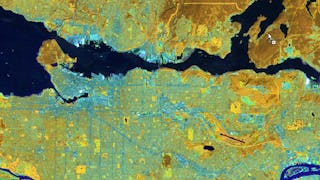Ready to harness the power of geostatistics for your data?
In this Geospatial Specialization Course #1: Basic Principles of Geostatistical Geospatial Modeling course, you’ll learn how to identify key variables, address outliers and missing data, and apply univariate and bivariate analyses—all within the versatile R programming environment. You’ll quickly master correlation and covariance matrices, construct dynamic visualizations (histograms, boxplots, crossplots), and uncover insights hidden in your spatial datasets. Next, you’ll dive into advanced geostatistical techniques, such as building omnidirectional and directional variograms, developing nested models, and performing kriging and co-kriging for precise spatial predictions. You’ll even explore conditional simulation to capture the full range of possible outcomes. Rigorous post-processing methods—including cross-validation, error variance mapping, and isoprobability analyses—let you confidently validate and refine your models. Whether you’re tackling environmental or mining data (or anything in between), you’ll finish the course with a powerful geostatistical toolbox and the know-how to apply it. Join us and discover how R-powered geostatistical modeling can transform raw data into actionable intelligence!




 enthalten
enthalten












